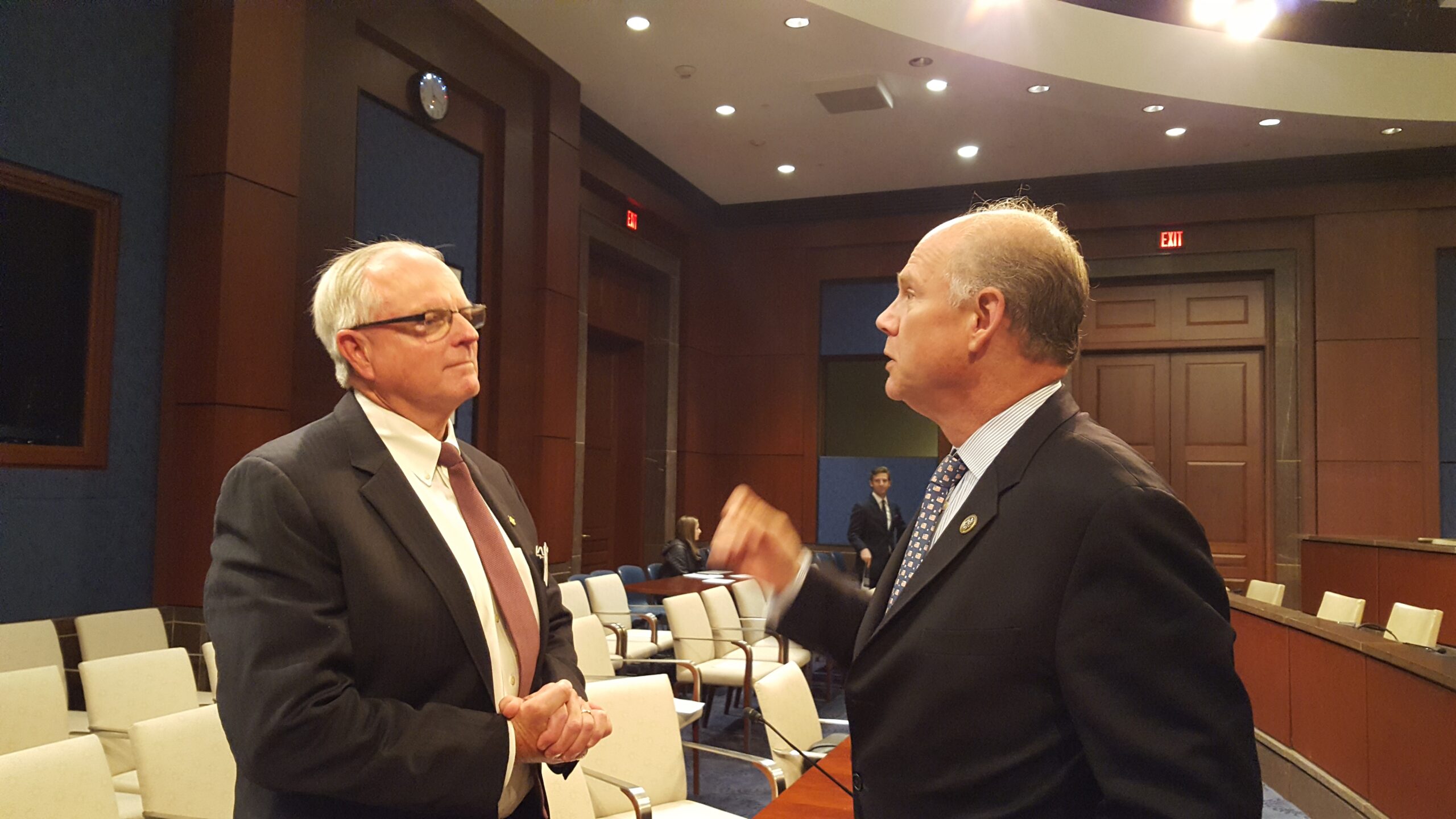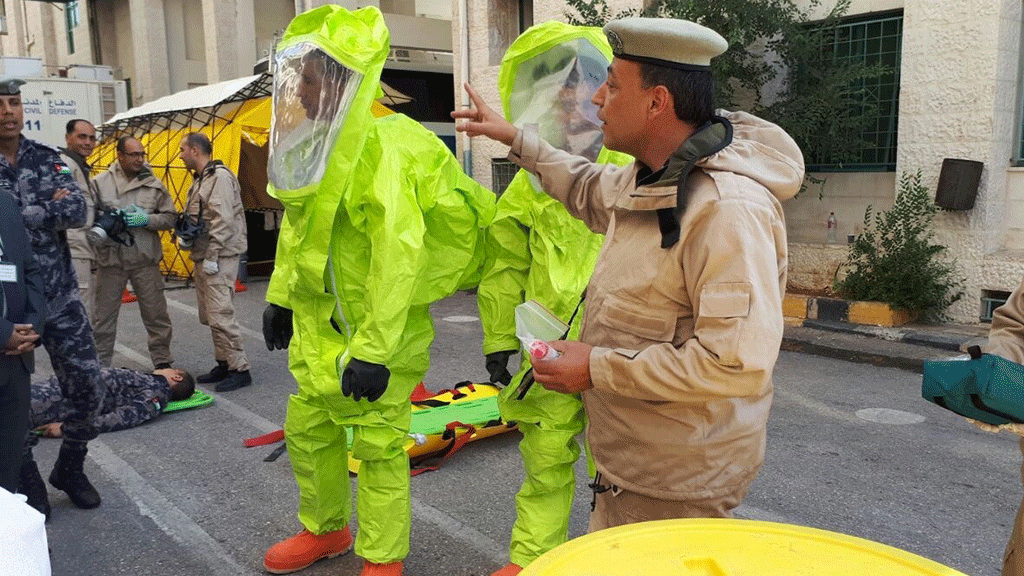The Importance of One Health in Combatting New and Re-emerging Infectious Diseases

CRDF Global has been fortunate to have outstanding board members throughout its 24-year history. Dr. Gerald Parker, who serves as Associate Dean for Global One Health at Texas A&M University’s College of Veterinary Medicine & Biomedical Sciences, joined the Board of Directors in 2019 and he brings a wealth of valuable experience and insight to our organization. We recently sat down with Dr. Parker where he discussed the One Health approach to combatting new and reemerging infectious diseases and the importance of increasing visibility of public health response methods.
What does the term One Health mean and why is it to important in thinking about biosafety and biosecurity?We live on a small planet. Thinking about public health concerns in only how they relate to humans misses a lot of opportunities to improve global health and wellbeing. One Health provides a framework for working in multidisciplinary teams. Traditionally, our work in the science community has existed in silos. Maybe that worked for past problems, but today’s global challenges– and the ones that we will face in the future–demand much greater, multidisciplinary team solutions. For instance, a big concern right now is Ebola in the Democratic Republic of Congo. In this case, we cannot just involve human health workers or animal health specialists, but we must think about how we bring in experts like anthropologists to help with cultural differences and building trust among communities. Unfortunately, funding and resources still often come down in silos, but the more we think about these collaborative approaches, the better off we will be.
Throughout your 30-year career in both human and animal health, has society always thought about infectious diseases as threats to global security or was there an event that caused that shift?It is hard to pinpoint the shift but the 1990s was a pivotal time when the country started to be more concerned about the proliferation of biological weapons. There was the fall of the Soviet Union and the U.S. government began to understand that the Soviets had built a large bioweapon complex. The U.S. Cooperative Threat Reduction program had always worked on prohibiting the proliferation of nuclear weapons, but they then started focusing on bioweapons as well. While I was the commander of the U.S. Army Medical Research Institute of Infectious Disease, we got pulled in to help redirect the work of some of the former Soviet Union scientists that worked in microbiology into peaceful public health practices. In 2000, a pivotal event was the United Nations Security Council resolution on HIV/AIDS and International Peacekeeping Operations, which deem HIV as a global security issue. PEPFAR (President’s Emergency Plan for AIDS) followed from that and the development community began to make major investments in fighting and controlling HIV. We started to recognize that infectious and emerging diseases are much more than just a health issue.
Biosecurity and public health aren’t what typically comes to mind when the average person thinks about the Army. Can you talk more about serving as the commander of the U.S. Army Medical Research Institute of Infectious Diseases?The army has a very long and distinguished history in infectious disease research that goes back to Walter Reed. The army learned the hard way that we must control infectious diseases to enable our forces to be effective. Look at the Panama Canal. The engineering prowess of the Panama Canal wouldn’t have happened if we didn’t control yellow fever and that was largely through Army research.
In addition to your time in the Army, you also served as the principal deputy assistant secretary within the Department of Health and Human Services (HHS), coordinating public health responses to Hurricane Katrina and the Haiti earthquake. General audiences don’t always think about public health during these types of crises. What role does One Health and biosecurity play during these events play?I’m not sure if the general public recognizes that public health communities gear up during disasters, right alongside agencies like FEMA. At HHS we deployed a lot of public health workers to assist in the disaster. This includes things like disease surveillance and mosquito control because standing water can have serious public health implications. Hurricane Katrina taught us a lot of lessons. The federal government has to be prepared to support state and local governments when they get overwhelmed. And we must have an all hazard preparedness plan, not just infectious diseases. There must be a plan to address the low acuity type injuries that don’t need actual hospitalization. We see FEMA in the news, but we don’t see all the great professionals at CDC and HHS. They are standing up in support of these disasters as well and we need to increase visibility of that to the public.
Are there any specific emerging infectious diseases that are a priority right now for the One Health community?From my perspective, a threat that keeps me up at night is influenza. Influenza strains originate in avian species. We need to give much more attention to that threat. There are some very dangerous influenza viruses in circulation today, H7N9 being one. Fortunately, we haven’t had a global pandemic, but it wouldn’t take too many genetic shifts for it to happen. In the emerging and infectious disease world we must really pay attention and use a One health approach because the next emerging and infectious disease that has pandemic potential is probably going to arise from an animal species. We have to apply a One Health approach where human health and animal scientists and virologists are working together. But our investments in the animal health side have been paltry. We must put much more emphasis on how to prevent a spillover event from happening. That might include animal vaccines, which we don’t invest in much as a country. When there is an outbreak on the animal side, we rely on culling or killing animals to stop the spread. We’ve got to look for alternatives, particularly in the lower-middle-income countries. If culling is the only tool that they have, how do we make sure that people are compensated properly so that they don’t hide and not report when they have an outbreak on their farms or premises. The African swine fever virus is spreading around the world with potentially huge economic impacts. All the pigs that are being culled to prevent the spread will affect the global protein supply. It is a difficult technical challenge and we need to invest more in prevention. Even though it is not a zoonotic disease, it is a One Health issue because it will affect the economy, political stability, wellness, happiness, and stability.
What impact do you see technological advancements and innovation having on One Health and biosecurity in the future?First, the promises of technology are extremely impactful in preventing outbreaks from becoming epidemic or pandemic. Technological advances in diagnostics, surveillance, and informatics often allow us to quickly stop new and re-emerging diseases from becoming a major epidemic. Advances in turning genomics into information that is quickly transmitted to decision-makers help us tremendously. But technology alone can’t solve everything. We must break down barriers between information sharing. Some of the policy and regulation impediments are harder than the technology barriers. Too often we look for the high-tech solution and sometimes we need to go back to basic public health measures. Making sure that we are strengthening global capacities in low-middle-income countries. It is more than just building a lab and putting equipment in it. It is making sure that we have people that are educated in host countries that want to stay in those countries and help be part of the solution. Universities can have a key role in helping low-middle-income countries develop their own degree-granting programs. This is not a technology solution, but it will take commitment, dedication, and funding from governments and private companies.
What has been one of your biggest lessons that you’ve learned in leading public health response initiatives through some really challenging times?At a big picture, it is all about leadership. When I think about my time at HHS I was on the leadership team but I was supported by a very strong executive leader, Secretary Mike Leavitt. It was an extraordinary time for public health preparedness and PEPFAR will be a major legacy of President George Bush for its impacts in HIV, TB, and malaria. That was a great example of leadership and adherence to strong values. I try to live and breathe Texas A&M values and Army values—leadership, transparency, and effective communications. I’ve learned that as scientists we need to do a better job translating complex topics to the public. We must communicate in an effective way but not scare the public, so that if we need to have, for example, a high containment lab in a community, the public has support and trust in the operations and effective biosafety and biosecurity measures.



